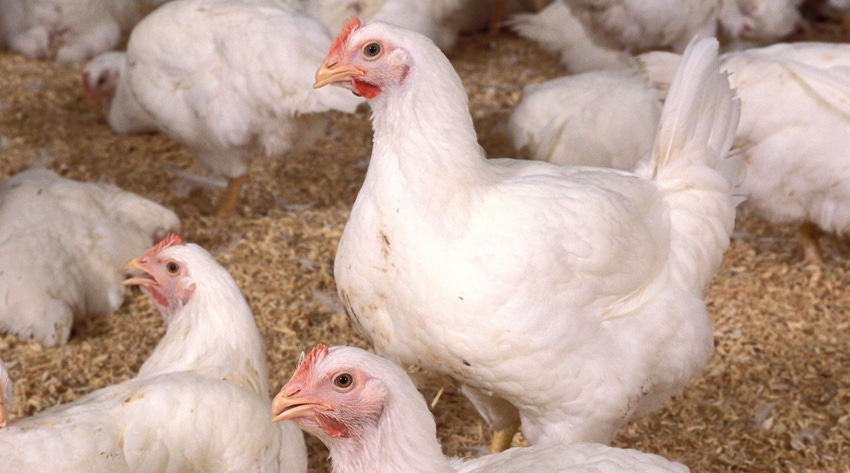April 21, 2022

Officials with the Utah Department of Agriculture and Food confirmed a diagnosis of highly pathogenic avian influenza in a small backyard flock of birds in Utah County on April 15.
“Our state veterinarian’s office was notified of symptomatic birds in Utah County and our team was immediately dispatched to assess the situation,” said Utah State Veterinarian, Dr. Dean Taylor. “Proper steps have been taken to prevent further spread of the disease.”
UDAF officials have worked closely with the United States Department of Agriculture’s (USDA) Animal and Plant Inspection Service (APHIS) on their incident response. The area in which the birds were located has been quarantined and the infected birds have been depopulated to prevent further spread of the disease.
Related: HPAI keeps spreading as university offers tips
As part of existing avian influenza response plans, UDAF and its federal partners are working jointly on additional surveillance and testing in areas around the affected flock.
HPAI has been detected this spring in many areas in the United States, Canada, Asia, Europe, and possibly other countries. This Eurasian strain is considered a foreign animal disease; however, detections began on the Eastern seaboard of the U.S. and have progressively swept across the Midwest into western states. In the West, the disease has also been detected in Colorado, Wyoming, Montana, Idaho and British Columbia.
Spread through waterfowl
According to David Frame, Utah State University Extension poultry specialist, the virus is spread mainly through waterfowl, which serve as the natural reservoir for all avian influenza viruses. Close contact with infected flock mates and contaminated water sources are likely the primary infection and dispersion vehicles. Infected waterfowl migrate and spread the virus as they travel and come in close contact with domestic waterfowl or poultry or through fecal contamination of open water sources.
“While detections have been made in commercial poultry in some areas of the country, they have also been seen in small backyard flocks that may have intermixed domesticated avian species such as chickens, geese, turkeys, or ducks,” he said. “In these outbreaks, there is likely a history of access to open water sources, such as ponds, ditches, or rivers.”
Related: Avian flu is spreading in the West
Although there are indications that the spring migration may have begun a little earlier this year, the general peak spring migration in Utah usually occurs in April and May, he said.
“Because we are now entering the peak danger period for possible avian influenza infections in Utah, it is important that our poultry owners are aware of the clinical signs of HPAI and the danger it poses, not only to their own birds, but also to commercial turkey, layer, and gamebird industries in Utah,” he said.
Preventive measures
Frame offers eight preventive measures for home flock owners to help keep chickens safe.
Change footwear and wash hands before and after contact with your home flock. Hands and feet are the major touchpoints of tracking the virus into flocks.
Identify “protectable” barriers, such as the entrance to the bird area, coop, and pen. Limit human and pet access to these places.
Do not allow your chickens to drink pond water or from other open water sources such as canals or ditches, and do not use this water to clean equipment. If a source is suspect, chlorinate before using it.
Only purchase poultry from National Poultry Improvement Plan-certified hatcheries and dealers. Do not buy poultry at swap meets or live bird markets.
Quarantine new acquisitions and birds returning from shows for three weeks to ensure they are not intermixed with other chickens.
If you hunt waterfowl, it is imperative that you shower and change into clean clothes before attending to your home flock.
Contact your veterinarian if you observe any unusual signs in your flock. These include enlarged bluish combs, swollen heads, apparent bruising on the shanks, nervous symptoms such as stargazing, or sudden death.
Never raise domestic waterfowl and chickens together, and do not raise mixed species such as chickens, turkeys, and Guinea fowl together.
Observe these preventative measures, and do your part to keep your home flocks safe this spring as well as any other flocks in your area. If you suspect your birds may have HPAI, contact your local veterinarian or the State Veterinarian’s office immediately at (801) 982-2200 or [email protected].
Source: Utah Department of Agriculture and Food, Utah State University, which is solely responsible for the information provided and is wholly owned by the source. Informa Business Media and all its subsidiaries are not responsible for any of the content contained in this information asset.
About the Author(s)
You May Also Like




